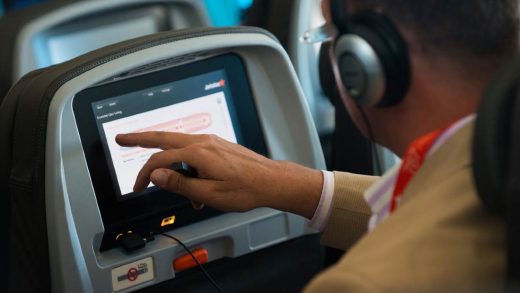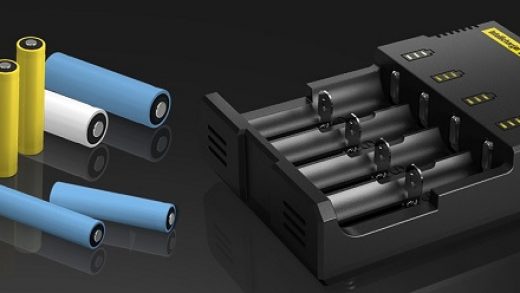Airborne Navigation: The Complete Guide to Garmin Handheld GPS Devices
Whether you’re planning your avionics stack in your first aircraft or upgrading your existing avionics, it’s essential to have the right GPS navigation and communication tools at hand. Before making a purchase, determine which devices make the most sense for your aircraft and your flying habits and needs.
Choosing the right aviation GPS is crucial for maintaining safety and improving flight efficiency. It’s more than a tool; it is a vital element in the cockpit. If you’re looking for a versatile and flexible solution, Garmin has multiple options available to suit every pilot, mission and budget. You can buy a Garmin handheld GPS device, designed for accuracy and reliability, and navigate the skies confidently.
Contents
A Breakdown of Garmin Avionics Handheld GPS Solutions

GPS receivers are the core component of any GPS system, whether portable or panel-mounted. They capture signals from satellites to determine location, direction, and speed. Understanding the types of receivers available can help pilots choose the right receiver and ensure their GPS delivers the performance and features needed for elevating their flying experience.
Portable GPS units combine convenience and adaptability. They are perfect for pilots flying different aircraft or those who need a backup navigation system they can rely on. Garmin portable GPS devices provide precise navigation and the flexibility to transition between cockpits, ensuring readiness no matter the aircraft type.
They’re designed for pilots looking for reliability, durability, and practicality in one device, and come with safety-enhancing features and offer simplicity of operation. All of them have been tested and optimised for use in demanding cockpit environments and are backed up by the most highly acclaimed service/support network in the aviation industry. Therefore, it’s no surprise pilots look to Garmin as their go-to source for today’s most reliable portable flight technology.
Garmin Avionics is the leader in developing advanced navigation, communication and flight control systems. It’s a renowned brand in the aviation electronics field, mostly known for its GPS technology. Garmin’s products are widely used in aviation and trusted by pilots around the globe.
They have revolutionised flight and become essential to pilots, aircraft owners and operators. Over the years, Garmin has become the leading provider of solutions to general aviation, business aviation, government and defence, and more.
Most of their avionic systems include touch-screen interfaces, integrated flight displays, and sophisticated communication and navigation systems, and are designed to enhance situational awareness and flight safety. Garmin aera 660 stands out for its user-friendly interface, comprehensive navigation features, and versatility, and offers invaluable navigation assistance across various flying conditions. Garmin Aera 760, on the other hand, is an advanced portable aviation navigation solution, including the latest in-flight features, IFR approaches, arrivals and departures and Garmin’s well-known touchscreen interface.
No matter which device you choose, Garmin Avionics contributes significantly to flight safety and operational efficiency thanks to the advanced features and reliability of their devices. The brand represents a benchmark in aviation technology and offers a wide range of modern solutions for experienced and aspiring pilots.
Garmin can keep you mission-ready around the globe thanks to its global distribution and support network. So, if you’re ready to modernise your mission or if you’re operating around the globe, opt for a Garmin handheld GPS device.
Reasons to Choose GPS Aviation Devices

Optimised Safety
Safety is of utmost importance in aviation. Navigation is an essential part of the experience, a compass that guides pilots through the skies with precision. Flight navigation ensures that pilots avoid potential hazards and optimise flight paths. Modern aviation focuses on pilot safety and efficiency. It’s more elaborate than just charts and geographical maps and is almost fully dependable on satellites.
Portable GPS devices are some of the most functional and reliable solutions for pilots these days, allowing them to see their latitude, longitude, height, and airspeed, and helping them to plan their route. Being in contact with the ground, and other aircraft, or being aware of the weather ahead, leads to a well-coordinated course, which simplifies the pilot’s work on maintaining distance from undesirable occurrences.
Enhanced Efficiency
Along with safety, efficiency has always been a crucial factor in aviation. Managing the movement of an aircraft makes the operation cheaper, but also cuts the environmental expenses a flight makes. GPS systems allow pilots to select straight-line and economical routing. While less distance flown means less amount of money spent on fuel, at the same time it means less carbon emission and promoting more responsible operations in the aviation industry.
Final Thoughts
Garmin offers the industry’s most comprehensive lineup of avionics upgrades, which is suitable for most missions and budgets. They provide industry-leading capabilities, increase situational awareness and enhance decision-making in the cockpit. Whether you’re a recreational or professional pilot, Garmin is your no.1 solution for bringing confidence and efficiency to your flights. You’re set for a world-class performance regardless of which Garmin avionics solution you opt for.

















